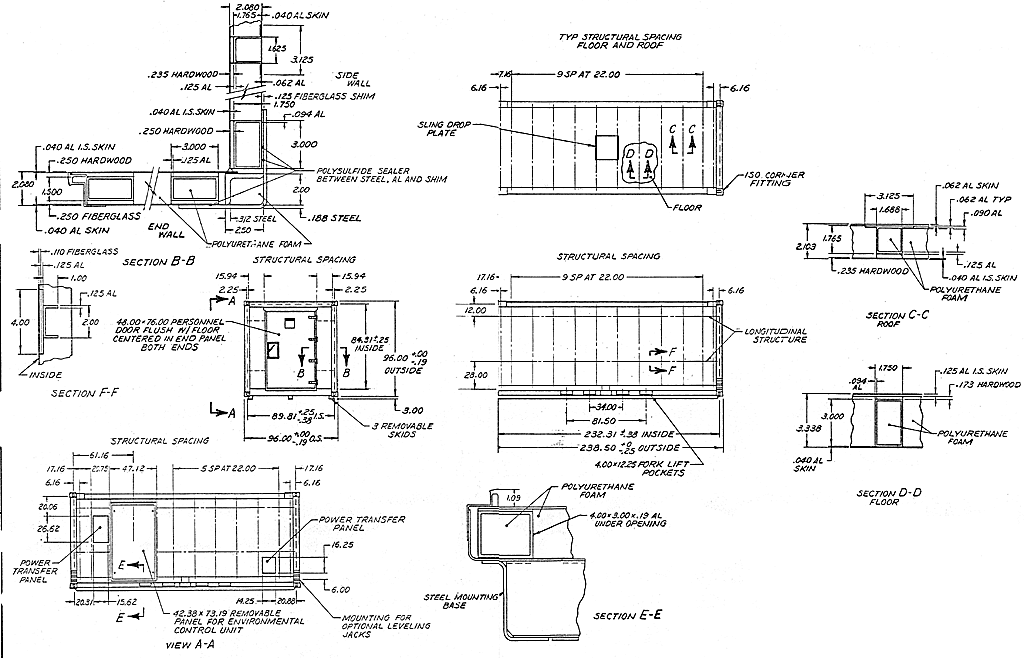Apr 5, 2017 - For example a standard 20′ container is called Dry Van (DV), General. You can download the full ISO Code list from my downloads page. Unlike weight, it is not possible to over pack the container by volume as it. ACEP being short for, Approved Continuous Examination Programme.
Making containers stackable made loading and transport on large ships feasible and efficient An intermodal container is a large standardized, designed and built for, meaning these containers can be used across different – from to to – without unloading and reloading their cargo. Intermodal containers are primarily used to store and transport materials and products efficiently and securely in the global intermodal freight transport system, but smaller numbers are in regional use as well. These containers are known under a number of names, such as simply container, cargo or freight container, ISO container, shipping, sea or ocean container, container van or () box, sea can or c can. Intermodal containers exist in many types and a number of standardized sizes, but ninety percent of the global container fleet are so-called 'dry freight' or 'general purpose' containers, closed boxes, mostly of either twenty or forty feet (6.1 or 12.2 m) standard length. The common heights are 8 feet 6 inches (2.6 m) and 9 feet 6 inches (2.9 m) – the latter are known as High Cube or Hi-Cube containers.
Just like and, these containers are a means to bundle cargo and goods into larger,, that can be easily handled, moved, and stacked, and that will pack tightly in a ship or yard. Intermodal containers share a number of key construction features to withstand the stresses of intermodal shipping, to facilitate their handling and to allow stacking, as well as being identifiable through their individual, unique reporting mark. In 2012, there were about 20.5 million intermodal containers in the world of varying types to suit different cargoes. Containers have largely supplanted the traditional – in 2010 containers accounted for 60% of the world's seaborne trade. The predominant alternative methods of transport carry – whether gaseous, liquid or solid – e.g.
For, the more light-weight -defined is used. Every international shipping container must have a 'CSC-Plate' Two years after McLean's first container ship, the started container shipping on the U.S. East Coast, followed suit between California and Hawaii. Just like 's containers, Matson's were 8 ft (2.44 m) wide and 8 ft 6 in (2.59 m) high, but due to California's different traffic code, Matson chose to make theirs 24 ft (7.32 m) long. In 1968, McLean began container service to South Vietnam for the US military with great success.

ISO standards for containers were published between 1968 and 1970 by the International Maritime Organization. These standards allow for more consistent loading, transporting, and unloading of goods in ports throughout the world, thus saving time and resources. The International Convention for Safe Containers is a 1972 regulation by the on the safe handling and transport of containers. It decrees that every container travelling internationally be fitted with a CSC Safety-approval Plate. This holds essential information about the container, including age, registration number, dimensions and weights, as well as its strength and maximum stacking capability. Longshoremen and related unions around the world struggled with this revolution in shipping goods. For example, by 1971 a clause in the (ILA) contract stipulated that the work of 'stuffing' (filling) or 'stripping' (emptying) a container within 50 miles of a port must be done by ILA workers, or if not done by ILA, that the shipper needed to pay royalties and penalties to the ILA. 